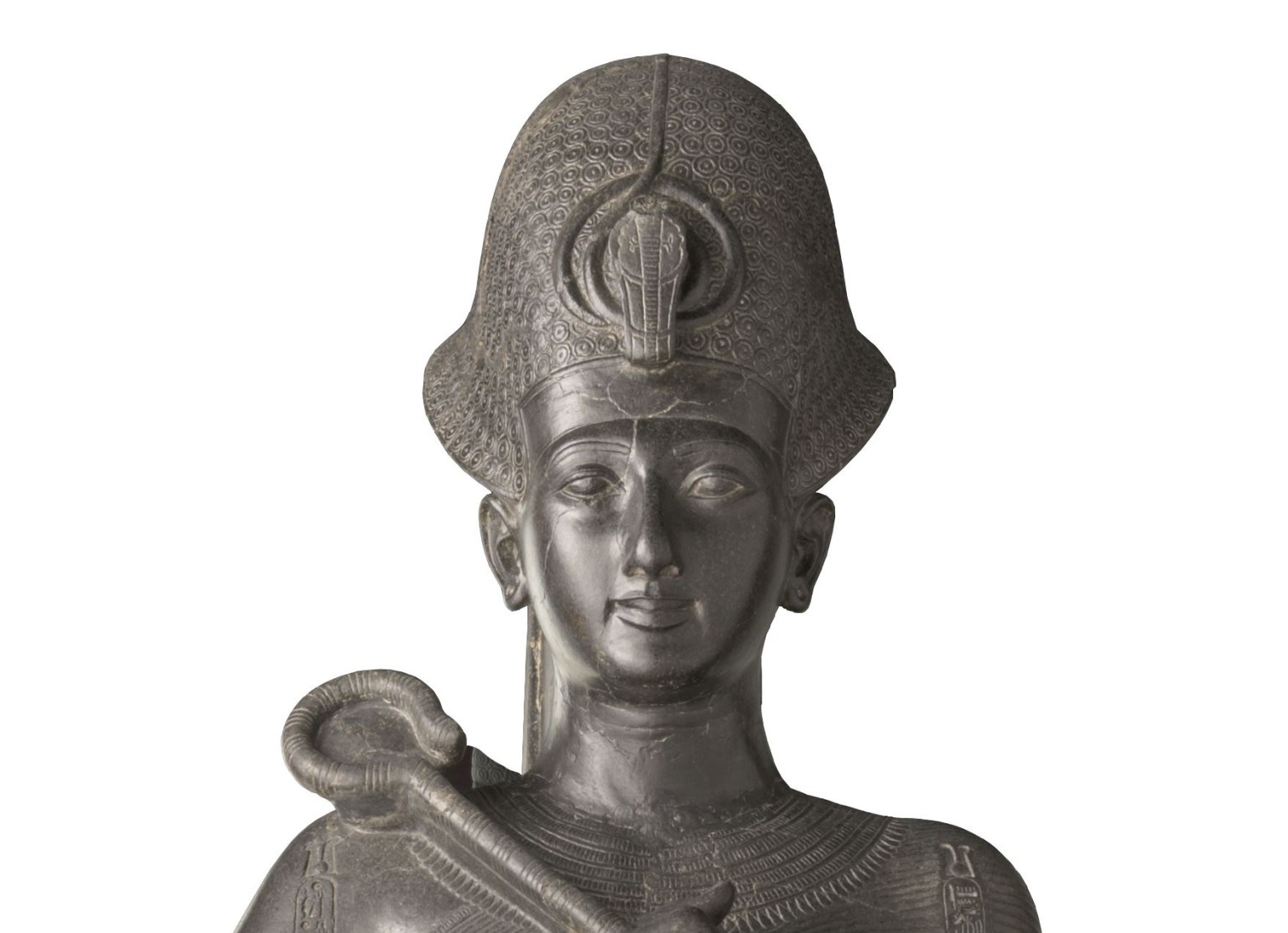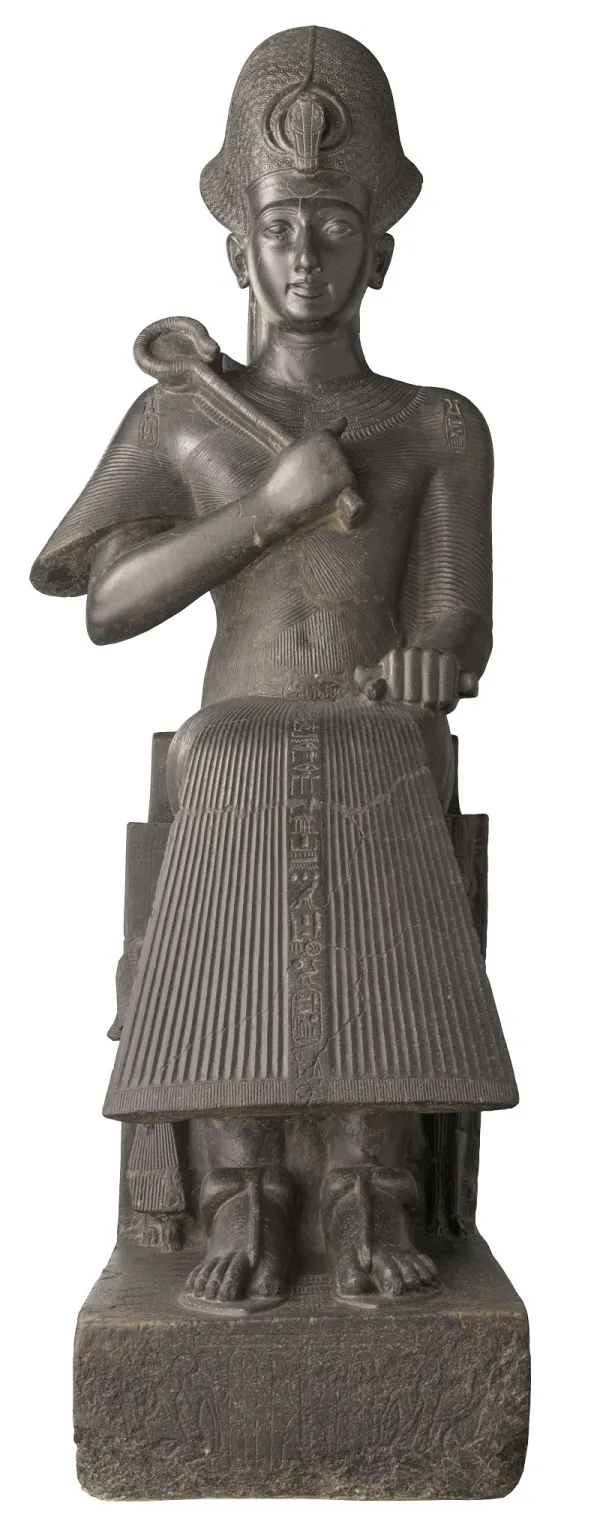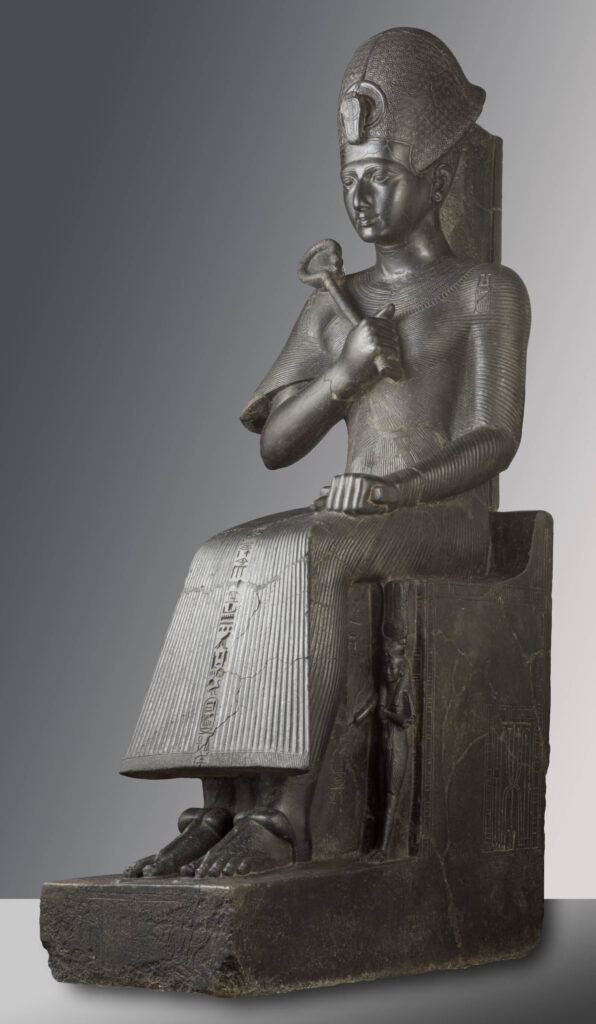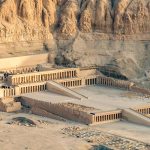Detail of a Granodiorite Statue of King Ramesses II

Detail of a Granodiorite Statue of King Ramesses II
This sculpture fragment depicts King Ramesses II, one of Egypt’s most powerful and celebrated pharaohs. It was carved early in his long reign, around 1279–1213 BCE, during the 19th Dynasty of the New Kingdom.

Ramesses II, also known as Ramesses the Great, reigned as the third pharaoh of Egypt’s Nineteenth Dynasty from 1279 to 1213 BCE, making him one of the longest-serving and most celebrated rulers in ancient Egyptian history.

Renowned for his military prowess, he led numerous campaigns to secure Egypt’s borders, most famously the Battle of Kadesh against the Hittites, which resulted in one of the earliest known peace treaties in history.

Ramesses II was also a prolific builder, commissioning grand monuments, temples, and statues, including the magnificent temples at Abu Simbel and his mortuary temple, the Ramesseum.

His reign marked a period of prosperity, artistic achievement, and architectural innovation, reflecting both his political power and devotion to the gods, particularly Amun. Celebrated as a symbol of strength, leadership, and legacy, Ramesses II remains one of ancient Egypt’s most iconic and influential pharaohs.










